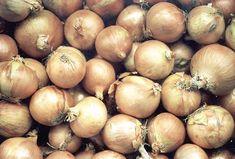
As the spectre of damaging over-production looms, the onion industry is being advised to think very carefully about its planting programmes.
Allium and Brassica Centre's joint managing director Andy Richardson sounded the warning. He said that while prices are high at the moment, at £200 a tonne in both the fresh and processed industries due to a short European crop, there is an optimum scale for UK production. "Beyond a total of 380,000t of brown onions on 8,500 hectares profitability falls," he said.
The danger signs are also beginning to appear in the red onion sector. Production has risen from 20,430t on 580 hectares in 2001 to 41,400t (1,036 hectares). "Don't get involved unless you have a guaranteed market," said Richardson.
The situation is already causing speculation over its effect on the post-Christmas winter campaign, said Dr Christoph Behr of ZMP, head of the German Department of Horticulture.
Evaluating a commodity where high price fluctuations are not only common from season to season, but also within each season, Behr said these were "often caused by speculative planting and storage decisions”. He said finding the balance between yields and demand is crucial.
Behr did not predict on how the season will progress, although he believes that if a shortage does arise this will serve to trigger early arrivals from New Zealand and Tasmania and bring South Africa, which is the earlier southern hemisphere producer, into the volume market picture.
The longer term outlook appears even more fraught. The EU switched in the 1990s from being a net importer to an exporter of onions. While EU production only rose by 2.5 per cent, the area is still producing nearly 4mt a year, the biggest output in history.
On the immediate horizon is an additional 1mt potential from two accession countries Poland and Hungary, both of which will become new EU members next year.
"Poland grows some 700,000t of onions, which represents 12.8 per cent of all vegetables," said Professor Jozef Robak from the country's Research Institute of Vegetable Crops at Skierniwice. "And it could be more because some growers don't bother with statistics."
While yields vary between 20t and 50t a hectare, Robak told the conference that he expects growers to improve on this as more advanced technology becomes available and accessible to them.
Poland is also the cheapest large-scale producer in Europe added his colleague Professor Frank Adamicki, who sees potential to significantly increase exports. He added, though, that the uptake will also come from other eastern European countries as well as markets such as Turkey.



